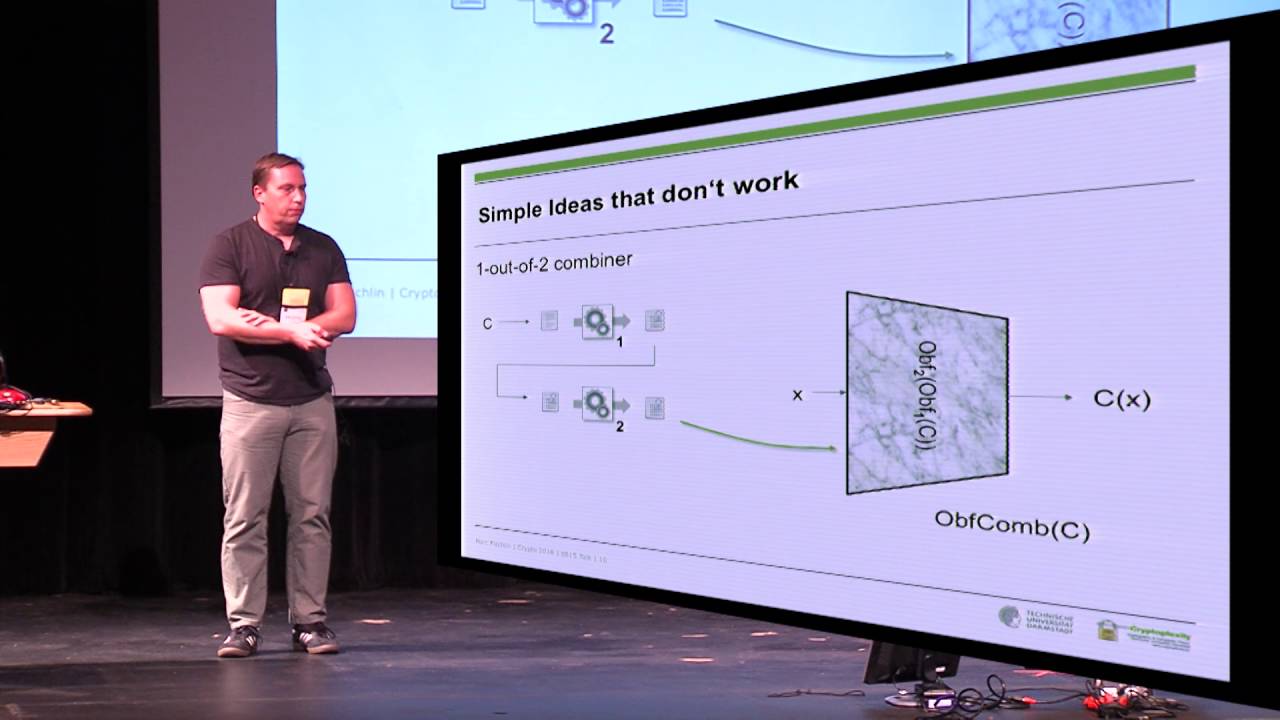Welcome to the resource topic for 2016/289
Title:
Obfuscation Combiners
Authors: Marc Fischlin, Amir Herzberg, Hod Bin Noon, Haya Shulman
Abstract:Obfuscation is challenging; we currently have practical candidates with rather vague security guarantees on the one side, and theoretical constructions which have recently experienced jeopardizing attacks against the underlying cryptographic assumptions on the other side. This motivates us to study and present robust combiners for obfuscators, which integrate several candidate obfuscators into a single obfuscator which is secure as long as a quorum of the candidates is indeed secure. We give several results about building obfuscation combiners, with matching upper and lower bounds for the precise quorum of secure candidates. Namely, we show that one can build 3-out-of-4 obfuscation combiners where at least three of the four combiners are secure, whereas 2-out-of-3 structural combiners (which combine the obfuscator candidates in a black-box sense) with only two secure candidates, are impossible. Our results generalize to (2c+1)-out-of-(3c+1) combiners for the positive result, and to 2c-out-of-3c results for the negative result, for any integer c. To reduce overhead, we define detecting combiners, where the combined obfuscator may sometimes produce an error-indication instead of the desired output, indicating that some of the component obfuscators is faulty. We present a (c+1)-out-of-(2c+1) detecting combiner for any integer c, bypassing the previous lower bound. We further show that c-out-of-2c structural detecting combiners are again impossible. Since our approach can be used for practical obfuscators, as well as for obfuscators proven secure (based on assumptions), we also briefly report on implementation results for some applied obfuscator programs.
ePrint: https://eprint.iacr.org/2016/289
Talk: https://www.youtube.com/watch?v=D3JI3H0Xj_I
See all topics related to this paper.
Feel free to post resources that are related to this paper below.
Example resources include: implementations, explanation materials, talks, slides, links to previous discussions on other websites.
For more information, see the rules for Resource Topics .
